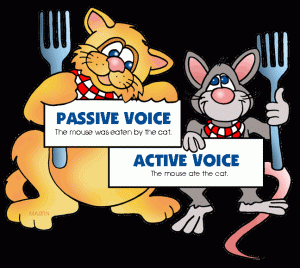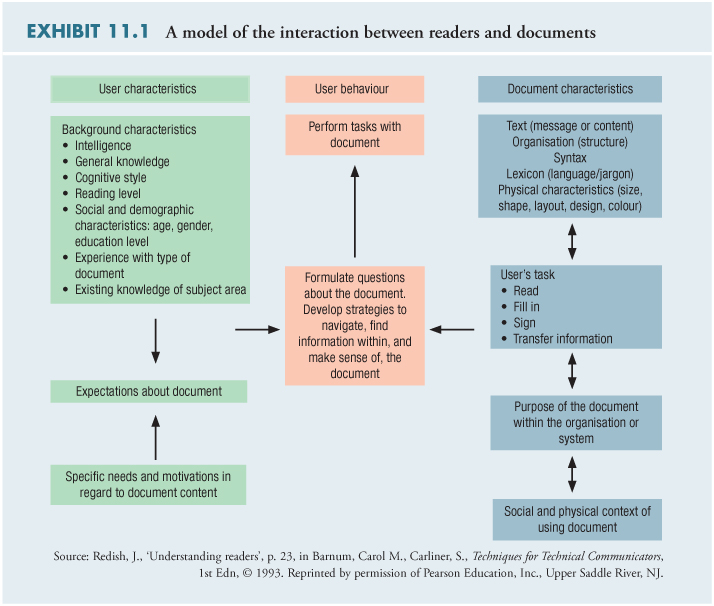Quick
Links:
Week 3 Lecture Slides (powerpoint)
Week 3 Lecture Slides (pdf notes)
Audio Lecture m4A
Practical Exercise 1: Analysing the Drug Rape Brochure
Research
Exercise 2: Lessons from the high school drug brochure
Style Tutorial: Using Active vs Passive Voice
What is the rhetorical approach?
In classical times, rhetoric was the art of persuasion. Karen
Schriver, in her acclaimed 1997 book Dynamics
in Document Design, notes that the recent focus of most  academic studies
in professional writing and document design is a reflection of the rhetorical
tradition. Rhetoric is most often linked to persuasion. It is generally used
to refer
to techniques,
usually
verbal, that are used to persuade. Its origins can be traced back to Ancient
Greece and Rome (details in Schriver chapter 2) and many of our ideas about
academic studies
in professional writing and document design is a reflection of the rhetorical
tradition. Rhetoric is most often linked to persuasion. It is generally used
to refer
to techniques,
usually
verbal, that are used to persuade. Its origins can be traced back to Ancient
Greece and Rome (details in Schriver chapter 2) and many of our ideas about
A rhetorical approach
to the teaching and study of writing focuses on communication and improving
communication. It assumes writing can be taught and considers audience
needs throughout the design process. The approach is functional – it
assumes that form follows function i.e. purpose. The rhetorical approach
is still the dominant approach to teaching of writing
and a great deal of attention is spent teaching students to analyse audience,
purpose and rhetorical context. A focus on rhetoric emphasises text producers
(speakers, writers, etc); audiences/readers and content/subject matter. A
useful quote which sums up the importance of focus on the audience comes
from Young, Becker and Pike (1970, 172 cited in Schriver, 1997, 163).
The writer frequently takes too much for granted, assuming
that merely by speaking his mind he can change the reader's. If he fails,
however, to utilise available bridges to to create new ones, his writing
will not be effective. Thus it is not enough that bridges exist; they must
be used – and therein lies much of the art of rhetoric.
The importance of considering rhetoric in technical or professional writing has also been the subject of a recent article by Neil James, the President of the Plain English Foundation. You can read his article, recently published in the journal Southern Communicator.
How do we 'do' audience analysis?
This is not a
simple question nor one to which there is a straightforward, all encompassing
formula
which can be applied to all writing and document design decisions. Studies
suggest professionals use different approaches to audience analysis – classifying
them, imagining them, or listening to them (Schriver, 1997, 162). She
goes on to say that
one model or another is not necessarily the answer but that they can
be used alternatively depending on the rhetorical situation. For
more detail on this along with a good case study of the writing and design
of a high school drug education brochure, see the full chapter from Schriver
which can be found here.
Schriver (1997: 152) says that to create effective communications document
designers must:
What can we discover from audience/reader analysis?
Reader analysis can be used to:
- Check the accuracy of documentation—does it contain
all the important information?
- Check ease of understanding—how much work does the
reader have to do to understand the document and difficulties they find?
- Check if the document can be understood by target audience/reader
i.e. test reader comprehension
- Measure accessibility—check how easily readers find
information
- Discover audience attitudes and feelings about the document;
the author; the subject matter; the organisation that produced the document
- Test user performance—e.g. readers might be given
a task to do, the documentation (usually an instruction manual), the tools
they need and then their progress is observed and timed. Can measure: time
spent reading the document, time taken to find specific information; observations
of frustration, confusion, satisfaction.
Class
discussion question
Can
you can
think of any other uses for reader/audience analysis?
Note: readers are rarely
design experts. You will rarely get
design solutions from your readers. As Schriver says,
one of the difficulties
of reader analysis
for professional writers and document designers comes
when you attempt to translate what your readers say into design or textual
decisions.
Practical Exercise 1: The Drug Rape Brochure – does it work for the intended audience?
Spend 15 minutes reading and analysing the
drug rape brochure. Jot down some ideas on paper
for initial reactions. These count more than you think. You are viewing
the brochure
for the very first time so make sure to write down what you feel as first impressions are extremely important!Then get together with another
person in the class.
A group of three is all right too. A good response will give examples from the brochure to back up your comments.
Here are some things to think about:
1. Will it interest
the readers? The information that presented in the
brochure should match the interest of the readers. Analyze what
it is that might catch the attention of your audience. The brochure
should answer what the
audience needs. 
2. Will it grab the attention of the audience and keep it? Information
in the brochure should be presented in a well-organised manner. Stimulating
statements are used so that the customers will easily notice it. It's a must
that the cover of brochures would stir the interest of readers. Remember
also that a company logo on the front of the brochure is not effective. It
would be great if you put something that will provoke the customers to pick
up the
brochure and know more about your company, event or topic.
3. Does it encourage the reader to seek further information? Good
brochures make the reader want more information, so are there contact details,
websites, email addresses?
4. Usually the main purpose of a brochure is to sell. This is not the
case with this brochure. It's essential that you see to it that the brochure is
directed to its customers. Show to your audience that you're interested with
their needs and that you want to keep in touch with them. How can you tell if
this brochure is meeting its target?
5. How could you
improve the brochure? Some criteria might be:
language, layout, design, graphics, content. Summarise your initial impressions and those of your group.
Make sure that you appoint one group member as a notetaker and that you share the notes. Include your individual and group responses in your portfolio.
Research
Exercise 2: Lessons from the high school drug brochure
Good writers will undertake detailed audience analysis before they publish their documents. However, often our intuitions about our audience, especially if they are from a different age or socio-economic group or if their lifestyles or experiences are very different from our own, can be very wrong.
As an example of this, read Chapter
3 from Schriver from her book Dynamics in Document Design. Summarise
the main points she is making in relation to the case study of the
high school drug brochure. What does this tell you about the potential differences
between
how a writer might envisage
their material and how the audience might see it?
Week 3 Style Tutorial:
Active vs Passive Voice
Last
week we began our exploration of professional writing 'style' by looking
at strategies for eliminating wordiness. This we will explore the use of
one technique based on what Williams refers to as his first 'principle
of clarity': that is, try to use the active rather than the passive voice.
Williams (2007, 34) says:
We have words enough to praise writing we like: clear, direct, concise, and more than enough to abuse writing we don't: unclear, indirect, abstract, dense, complex. We can use those words to distinguish these two sentences.
1a. The cause of our schools' failure at teaching basic skills is not understanding
the influence of culture on learning.
1b. Our schools have failed to teach basic skills because they do not understand
how cultural background influences the way a child learns.
Most of us would call (1a) too complex and (1b) clearer and more direct. But those words don't refer to anything in those sentences, they describe how those sentences make us feel.
In grammar, a sentence
is said to be in the 'active voice' when the subject of the sentence is
clearly seen to be performing the action of the verb. When the 'passive voice'
is used, we may know what action is occuring, but the subject (or actor) may be either remote, unclear or not stated.
For example, look at this sentence:
A review of the case by the appeals board was requested by the representative.
This sentence
is said to be in the 'passive voice'. It is quite longwinded and convoluted
with the subject situated at the end of the sentence (underlined), a long way from the
main verb. To rewrite this in the active voice, we would revise it like this:
The representative requested
that
the appeals board review the case.
For a more
detailed explanation of this tricky principle, here's another flash tutorial
to help
you. A link can also be found on the homepage of this site.
Your
turn!
Week 3 Style exercises: Active and Passive Voice
Some suggested answers
 academic studies
in professional writing and document design is a reflection of the rhetorical
tradition. Rhetoric is most often linked to persuasion. It is generally used
to refer
to techniques,
usually
verbal, that are used to persuade. Its origins can be traced back to Ancient
Greece and Rome (details in Schriver chapter 2) and many of our ideas about
academic studies
in professional writing and document design is a reflection of the rhetorical
tradition. Rhetoric is most often linked to persuasion. It is generally used
to refer
to techniques,
usually
verbal, that are used to persuade. Its origins can be traced back to Ancient
Greece and Rome (details in Schriver chapter 2) and many of our ideas about



